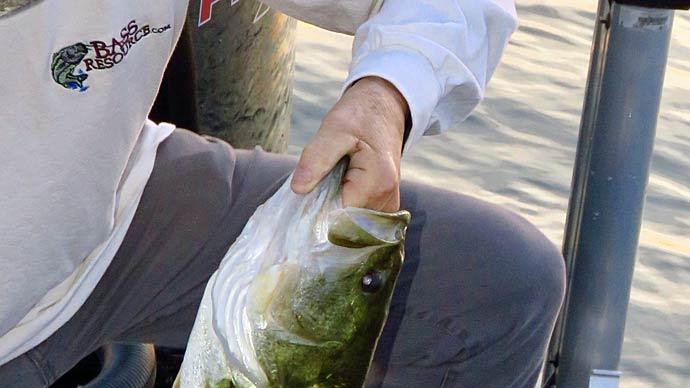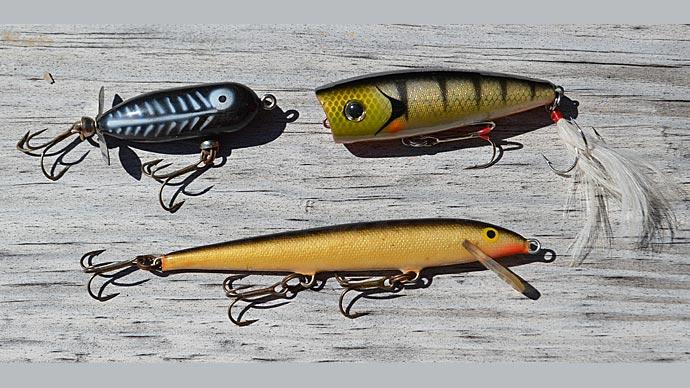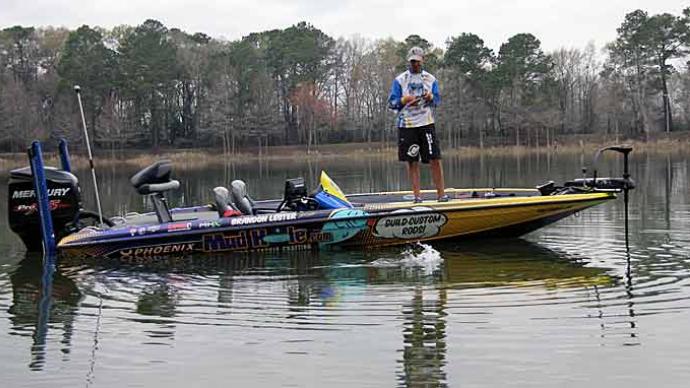
Bass anglers are familiar with this common phrase, “Fishing lures aren’t made to catch fish. Lures are made to catch fishermen.” There is no limit to the colors, styles, wires, blades, buzzers, and bling lure companies create. In a community where every fish seems to gain a pound each time the story is told, and the number of fish caught is often exaggerated, it is easy to dismiss any new trend in lure design as a gimmick.
Flying lure, Banjo minnow, laser baits, and others claim to be the lures that can do it all. That is just not the case. It can feel like the people you expect to provide dependable gear are taking advantage of your passion. Put away cynicism for a moment and consider a few things. Many of today’s new lures are designed by touring professionals, many of today’s lures are backed by extensive scientific research, and currently, there is a build quality at lure manufacturers, which is respectable at worst. Are all lures gems? Not likely, but many are great fish-catching tools for the season and purpose for which they were designed. One such lure is a rat.
Rats will not catch every fish in every lake. They may not catch fish all year long, but they can be an extremely effective tool for tournament fishermen. Of course, there is no limit to the fur, fuzz, blades, tails, paint schemes, and actions to choose from. Once you find a way to navigate through the choices, you will find that rats can be a tournament workhorse.
The first step to wading into the rat game is considering the package you want to present. In any fishing situation, rod, reel, line, and lure must work harmoniously. Most of that harmony is predicated by the lure you plan to use. For throwing rats, you will want to ensure you have the right power and length fishing rod to work the bait effectively.
The Denali Kovert 7’2” medium heavy action rod is a great choice. It has good power, a workable tip, and isn’t too long to limit rod angles. The soft tip will help keep fish pinned to your treble hooks if your rat has them. An all-around reel like the Shimano Chronarch MGL in a 6.3:1 gear ratio covers a variety of lures and is a perfect match for rat fishing. Spool your reel with 30 lb Seaguar TactX Braid, which has built-in camouflage. This combination works for most rat scenarios. It is compact enough to work the rat effectively and sturdy enough to work a large lure. Plus, it can easily bring in double-digit bass.
The next step is selecting the rat. Several baits of notoriety are the Fishlab BBZ-1 BioRat, Jerry Rago's Walking Rat, 22nd Century Nezzuma Rat V Cut Swimbait, and a handful of custom-built rats. Again, check out Tacklewarehouse.com for a great selection; the reviews section has reliable information to help you choose.
To keep it simple, go with the Fishlab due to its value and excellent action. There is no need to buy more than two or three colors because the silhouette is the most crucial consideration. Select a dark color for low-light conditions and a light color for bright conditions. Black is an all-around good choice because bass always seem to be able to find it. Pick several rats out of a lineup, and you are ready for the water.
Unlike the Banjo minnow, a rat will not work everywhere on the lake all year. Therefore, Bass must be willing to react to topwater baits, which generally begin when the water temperature reaches 55*. Until the fish return deep in the fall is your window to capitalize; when the topwater bite dies, you can put the rat away.
There is no limit to the places you can fish a rat, but there are a few key areas you will want to focus your attention on. Riprap, points, weed edges, standing timber, and any vertical structure your lake offers. These are where rats are forced to swim because the areas they are walking on (thick grass, rocky shoreline, tree limbs) have left them without a foothold. Of course, you can fish your rat in the middle of the weeds, but treble hooks make that approach inefficient, and there are generally better techniques for those scenarios.
As always, let the fish and conditions guide you. Fish points with wind on them, quick access to deep water helps, and if you get a bite in one area, search for similar areas around the lake. It will not work everywhere, but you will be thrilled when it does.
Fishing a rat bait is pretty simple. If it is a jointed style, slowly crank your rat and let the bill do the work. It should have a seductive wobble and click each time the hinge works from side to side. The tail will slither behind, and bass will travel a long way to investigate the sound and motion. If the bass want a heavier action adjusted to their liking, they are the patrons.
The non-jointed baits are great for a walk-the-dog action. A twitch, twitch, pause will be the best cadence for summoning hungry fish. Sometimes mixing up the retrieve will better match conditions, but most of the time, a slow crank of the jointed bait is the best approach to rat fishing. While the retrieve is slow, be ready to kick it into gear when the big fish bite.
The best feature of fishing rats is they catch big fish. Before considering the tail, these are four- to six-inch baits and are a mouthful to most fish in a lake. The little guys can and will attack, but it is often the case that the biggest fish in the area has dibs on the best source of protein around. You knowingly pass up on catchable fish to target a larger average size, making rats a sound choice for tournament day.
You may already have a full livewell but nothing to hang your hat on. Skip the jig and throw the rat because the next fish you catch will be worth culling. They also make a tremendous pre-fishing tool. By fishing large and noisy baits, you can get a lot of fish to follow, but not always eat. This is a tricky way to identify the size of the fish in your area without putting a hook into the lip of any. You can return on tournament day to the areas with bigger fish and if they do not eat the rat, switch presentations until you find what they want. We all aim for five fish by three o’clock, and the rat is a great way to ensure those five fish are competitive at the scales.
There are hundreds of great new lures in the confusing cloud that is a modern tackle box. Many work, some don’t, and a few rise to the top as multifaceted tools which will change how you approach fishing. The rat does the latter. It is simple to fish, is a common food source for bass, and has a propensity for upgrading the size of your catch.
You don’t have to go overboard either; one brand in a few colors will be enough to prepare you for rat fishing fully. In clear water or stained, over deep water or shallow, try the rat and see what it can do for you. At the right time and place, the rat will be your best friend. It can find big fish, catch them, and provide memories of topwater strikes, which you can exaggerate for years.
BassResource may receive a portion of revenues if you make a purchase using a link above.




